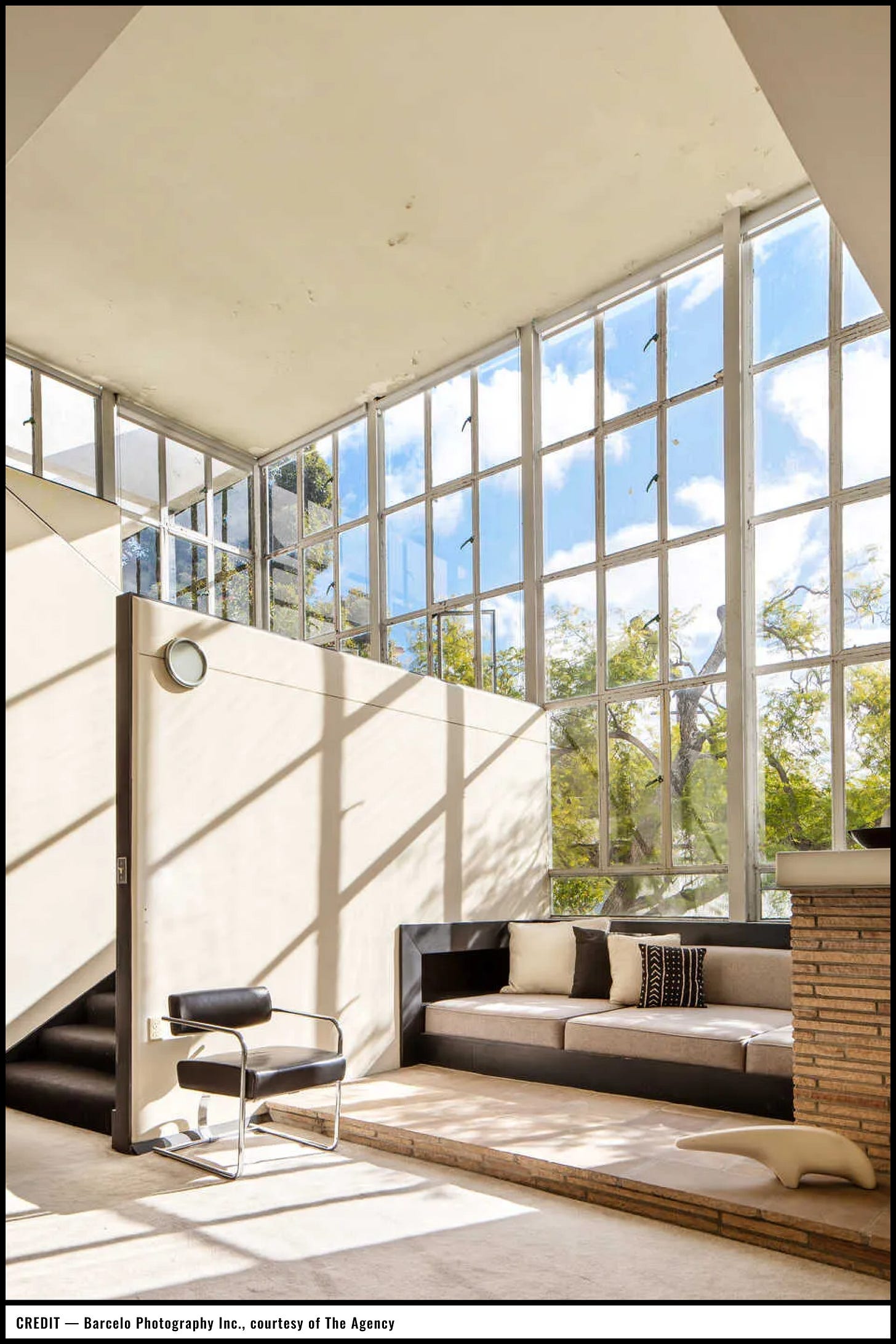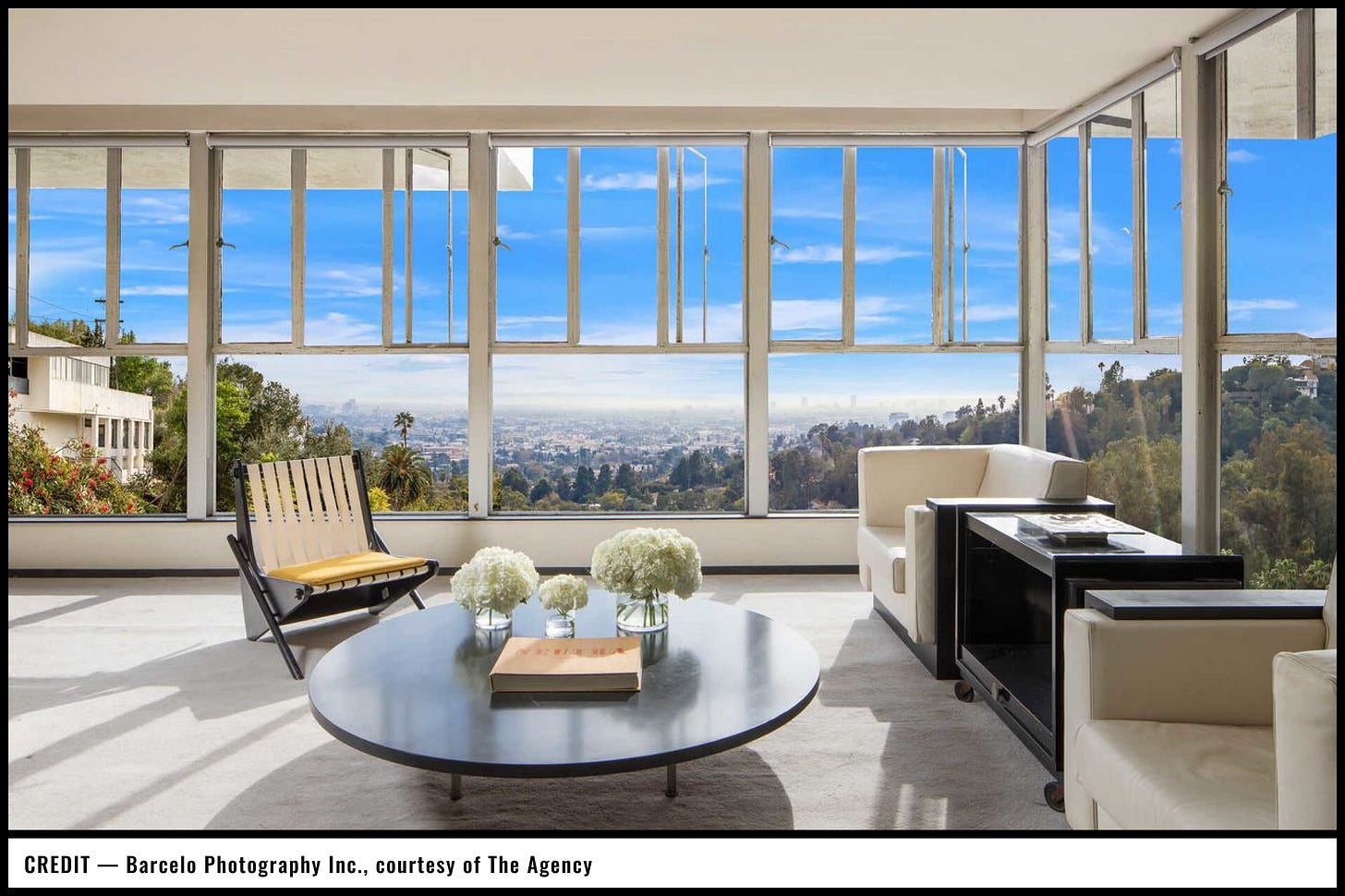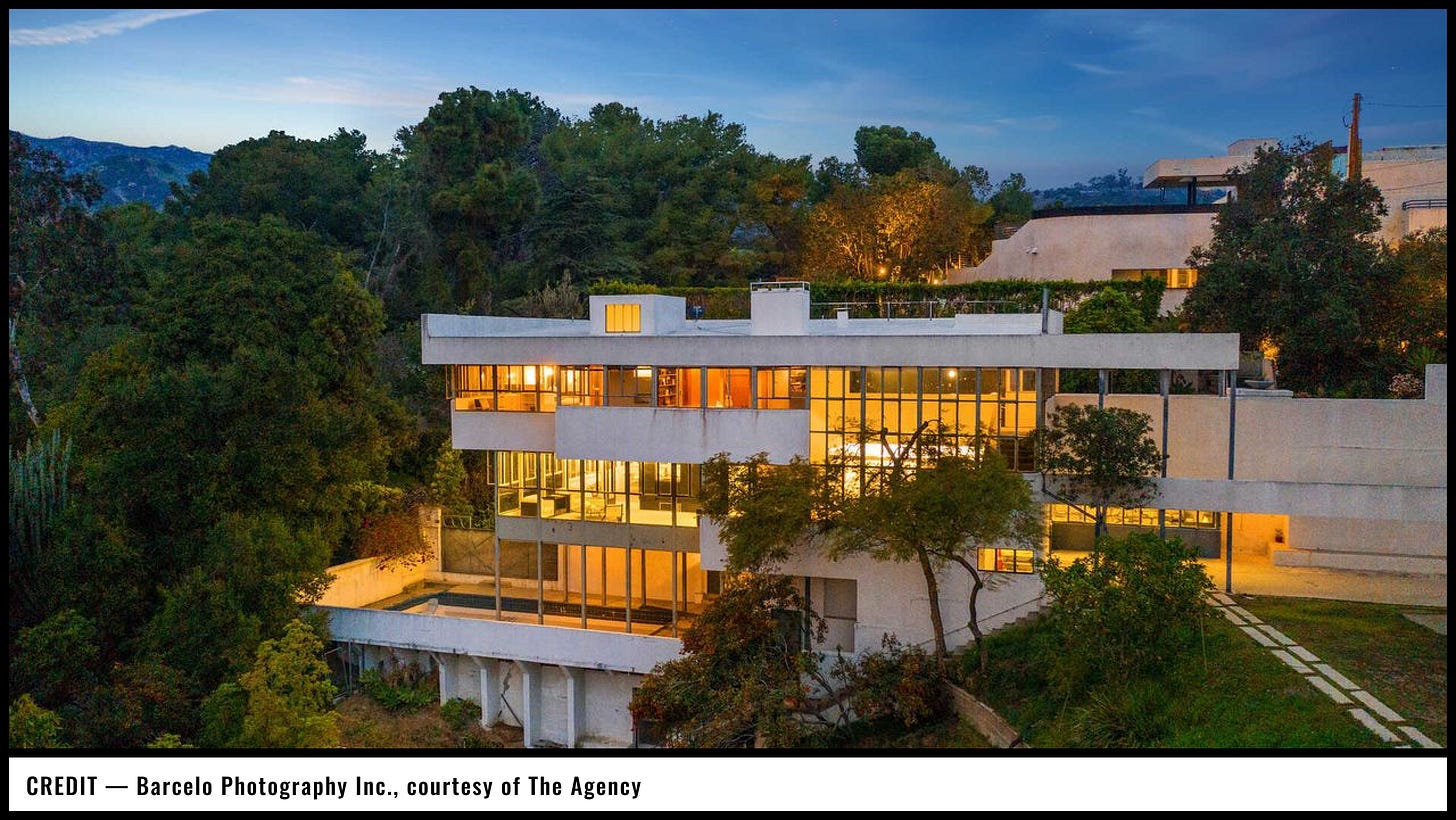A Los Angeles home, fit for a healthy king
“A Mondrian painting come to life”
Wedged into the hillside of Los Feliz, Los Angeles stands a nearly 5,000 square foot home, built of steel beams, expansive windows, and stark, white walls.
It’s thought of as one of the greatest homes in Los Angeles, a monument to modern architecture, once described as “a Mondrian painting come to life” by the architect and author Charles Moore.
This is the Lovell House, designed by Richard Neutra, built in 1929.
To understand this house you must first understand it’s owner, Phillip Lovell.
Lovell immersed himself in the world of homeopathic medicine and healthy living after quitting his desk job in Manhattan. He moved to Los Angeles to start his practice and became something of a guru — he wrote sermons, published meat-free recipes, practiced a strict raw-food diet, and promoted the benefits of activities like cold showers, and nude sunbathing.
Lovell wanted a house that was as much him as it was a place to live.
To build it, he looked to the young architect, Richard Neutra. Neutra was a student of European Modernism, a style that skewed more industrial and machine-like than it did natural, a departure from the style of some of Lovell’s vacation homes designed by Rudolph Schindler.
Neutra designed the house to be a reflection of Lovell himself. Lean, yet sturdy. Pure and intentional. Efficient. Meticulously crafted. Engineered.
The house features expansive windows extended across the hillside, allowing ample natural light for Lovell and his family to sunbathe, regardless of the weather.
In the yard were fruit-bearing avocado trees, and perched on the lower level was a small pool where the family could soak.
The bathrooms included hydrotherapy equipment, like sitz baths and marathon showers. The house even accomodated outdoor sleeping — every bedroom had its own private “sleeping porch.”
The design is a hybrid between the styles of Frank Lloyd Wright and Le Corbusier; it embraces its natural environment and Wright’s planar styles, yet it’s exceedingly modern and industrial.
Alongside the stairwell are headlights from the Ford Model T — both a machine for healthy living, and the epitome of American industrialism which Neutra so heavily admired.
The window panes, used heavily throughout the home, were factory-made. It’s also claimed to be the first home that used a modern steel structure typically used in skyscrapers, a technique Neutra learned while working in Chicago and New York. In addition to its steel columns, the house is tethered to the hillside by a tension cable.
Its unique design and innovative construction catapulted Neutra into a new level for his career, and the house itself became an architectural landmark — the Case Study homes borrowed much of their design inspiration.
Today, the Lovell House is still standing. In 2021, it was purchased by art dealers Iwan and Manuela Worth for $8.75M who intend on restoring it to its original condition.
The Historic American Buildings Survey described the Lovell House as "a prime example of residential architecture where technology creates the environment.” It’s also a reminder of the opportunity we have to embrace a broader definition of “environment” — one that incorporates our lifestyles, our habits, our passions, and our ideals. Better design doesn’t just look or feel better. It can help us live better too.










